
What to do at Ba Be Lake in 2 or 3 days?
- on Feb 8, 2020 By: BN
A nature reserve located in the Northeast of Vietnam, Ba Be National Park is the green jewel of the country, a beautiful place that has remained very wild, much appreciated by travellers in search of a nature destination and turned to ecotourism. This abundant biodiversity reserve, surrounded by karst mountains and housing within it a freshwater lake containing several rare fauna and flora species, is classified as an ASEAN heritage park. Athletes, contemplatives and poets enjoy Ba Be as nature is generous and the activities are numerous. In two or three days, place your stay in Ba Be under the sign of a return to the roots.
Discovery of Ba Be Lake in 2 days
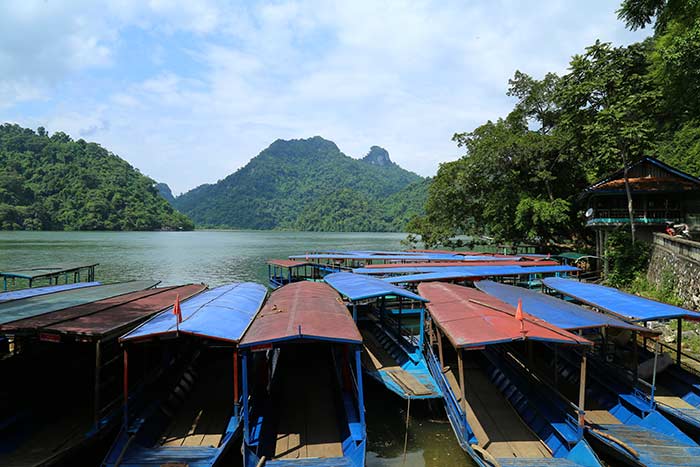
Two days is the minimum to discover the extraordinary landscapes, the fascinating biodiversity and the rich culture of one of the most beautiful national parks in Vietnam. Travellers go to Ba Be National Park to discover its lake, which actually consists of 3 lakes: Pe Leng, Pe Lu and Pe Lam. Covering 500 hectares, Ba Be Lake is the largest freshwater lake in Vietnam and the highest since it is 150 metres above sea level. This magnificent expanse of emerald-coloured water is surrounded by impressive karst peaks that form the Pia Booc mountain range and thick jungles and dense coniferous forests, home to many animal species including 65 species of mammals, including pangolins, flying squirrels, macaques, langurs and Asian black bears.

For this first day of discovery of Ba Be National Park, you can take a nice boat trip on the lake. This will allow you to appreciate the extraordinary surrounding nature which is reflected in the waters of the lake. During this walk, you can discover the Puong cave. This 200m long cave with an average height of 25-30m is nestled in the Lung Nham mountain that crosses the Nang river. You can appreciate its fabulous stalactites and stalagmites lit by a luminescent light. This cave shelters a large colony of bats whose flight at the end of the day is always an astonishing sight. Another beautiful cave to visit is Hua Ma. A fantastic set of caves 800m long, with a path that descends to a huge cave (50m high) full of stalactites and stalagmites. A third cave, discovered very recently, is also worth a look: the Lo Mo cave shelters stalagmites and stalactites reaching for some up to 40 metres in height.
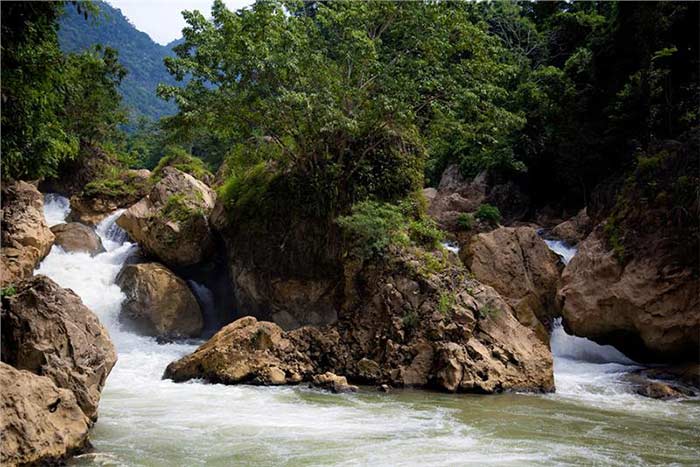
The discovery of the sublime Dau Dang waterfalls is another great moment of your boat trip. The Dau Dang Falls consists of an impressive series of rapids that stretch over one kilometre. It is often an opportunity to also stop for lunch in a small local restaurant that serves one of Ba Be's specialities: pork sausage.
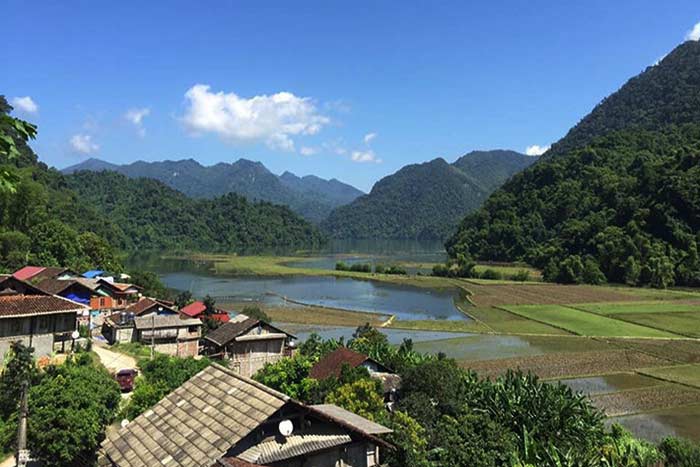
After this lovely ride on the lake, you can explore Pac Ngoi village, home to around a hundred families of the Tay ethnic group. We particularly appreciate the beautiful traditional wooden houses on stilts and its peaceful atmosphere. We invite you to sleep with the locals during your stay in Ba Be to immerse yourself in the local culture and to appreciate the hospitality of the Tay. You should know that it is also possible to discover Lake Ba Be by kayak, a more ecological way to be in osmosis with the superb surrounding nature.
For your second day at Ba Be, you can go hiking for a few hours or the whole day. This walk will allow you to appreciate the beautiful nature and the magnificent rice fields.
Discovery of Ba Be Lake in 3 days
Some travellers like to spend this third day resting and enjoying the absolute tranquillity of the place. The more athletic will be able to take advantage of these 3 days to go on a 2-day hike with a night at the inhabitants. This 2-day hike will allow you to discover wild territories where the Dao and Hmong ethnic groups live. To reach their remote villages, you have to make the efforts by taking small paths of steep wooded mountains streaked with rice terraces. Then, you will be rewarded with spectacular views and the welcome of families who accommodate you with simplicity but friendliness in their homes for the night.
When to go to Ba Be?
To take full advantage of this wonderful natural setting that is Ba Be National Park, it is very important to choose the right season. Avoid absolutely the months of December, January, February and March. It’s winter in Tonkin so it’s cold to very cold and the houses of the locals are not heated. There is also drizzle which makes the trails muddy. July and August are also to be avoided due to the heavy rainfall. April, May, June, late September, October and November are the best months to go trekking in Ba Be National Park and these are the months when the rice fields are the most beautiful.
Related articles:
>> 3 days getaway in Ba Be, the largest lake in Vietnam
Comment
Other Blog
Categories
Latest News
on 27 Apr, 2023      
on 15 Apr, 2023      
on 28 Mar, 2023      
 Español
Español Français
Français






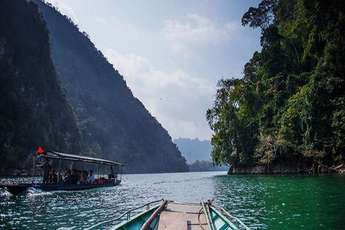

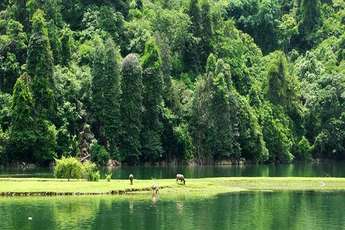
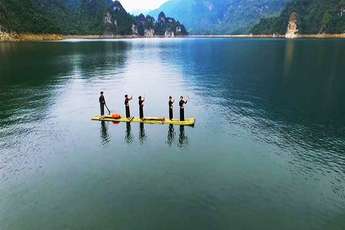
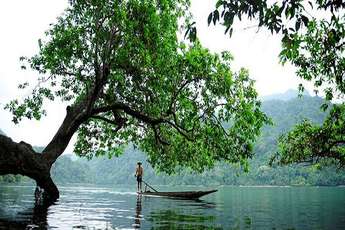







F
on Jan 3, 2024Igor Mozetic
on Apr 8, 2023Ira Beale
on Feb 10, 2023Phạm Phú Toàn
on Jan 28, 2023Max Stover
on Jan 11, 2023